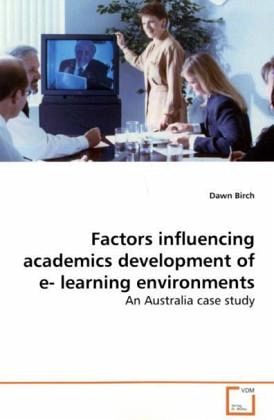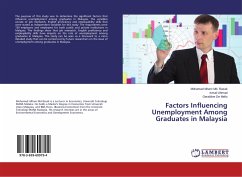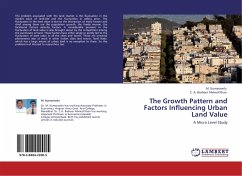
Factors influencing academics development of e- learning environments
An Australia case study
Versandkostenfrei!
Versandfertig in 6-10 Tagen
51,99 €
inkl. MwSt.

PAYBACK Punkte
26 °P sammeln!
Advances in technology and the continued emergence of the Web as a major source of global information have encouraged tertiary educators to take advantage of this growing array of resources and move beyond traditional face-to-face and distance education correspondence modes toward a rich technology-mediated learning environment. Moreover, ready access to multimedia at the desk-top has provided an opportunity for educators to develop flexible, engaging and interactive learning resources, incorporating multimedia and hypermedia. This book prevents the findings of a study that investigated pedago...
Advances in technology and the continued emergence
of the Web as a major source of global information
have encouraged tertiary educators to take advantage
of this growing array of resources and move beyond
traditional face-to-face and distance education
correspondence modes toward a rich technology-
mediated learning environment. Moreover, ready
access to multimedia at the desk-top has provided an
opportunity for educators to develop flexible,
engaging and interactive learning resources,
incorporating multimedia and hypermedia. This book
prevents the findings of a study that investigated
pedagogical, individual and institutional factors
influencing the adoption and integration of
educational technology by academics at a regional
Australian university, for the purpose of developing
e-learning environments. The findings of this study
revealed that a range of pedagogical, individual and
institutional factors influence academics
development of e-learning environments.
Implications for distance education providers and
individual academics arising from these factors and
subsequent recommendations are presented.
of the Web as a major source of global information
have encouraged tertiary educators to take advantage
of this growing array of resources and move beyond
traditional face-to-face and distance education
correspondence modes toward a rich technology-
mediated learning environment. Moreover, ready
access to multimedia at the desk-top has provided an
opportunity for educators to develop flexible,
engaging and interactive learning resources,
incorporating multimedia and hypermedia. This book
prevents the findings of a study that investigated
pedagogical, individual and institutional factors
influencing the adoption and integration of
educational technology by academics at a regional
Australian university, for the purpose of developing
e-learning environments. The findings of this study
revealed that a range of pedagogical, individual and
institutional factors influence academics
development of e-learning environments.
Implications for distance education providers and
individual academics arising from these factors and
subsequent recommendations are presented.












